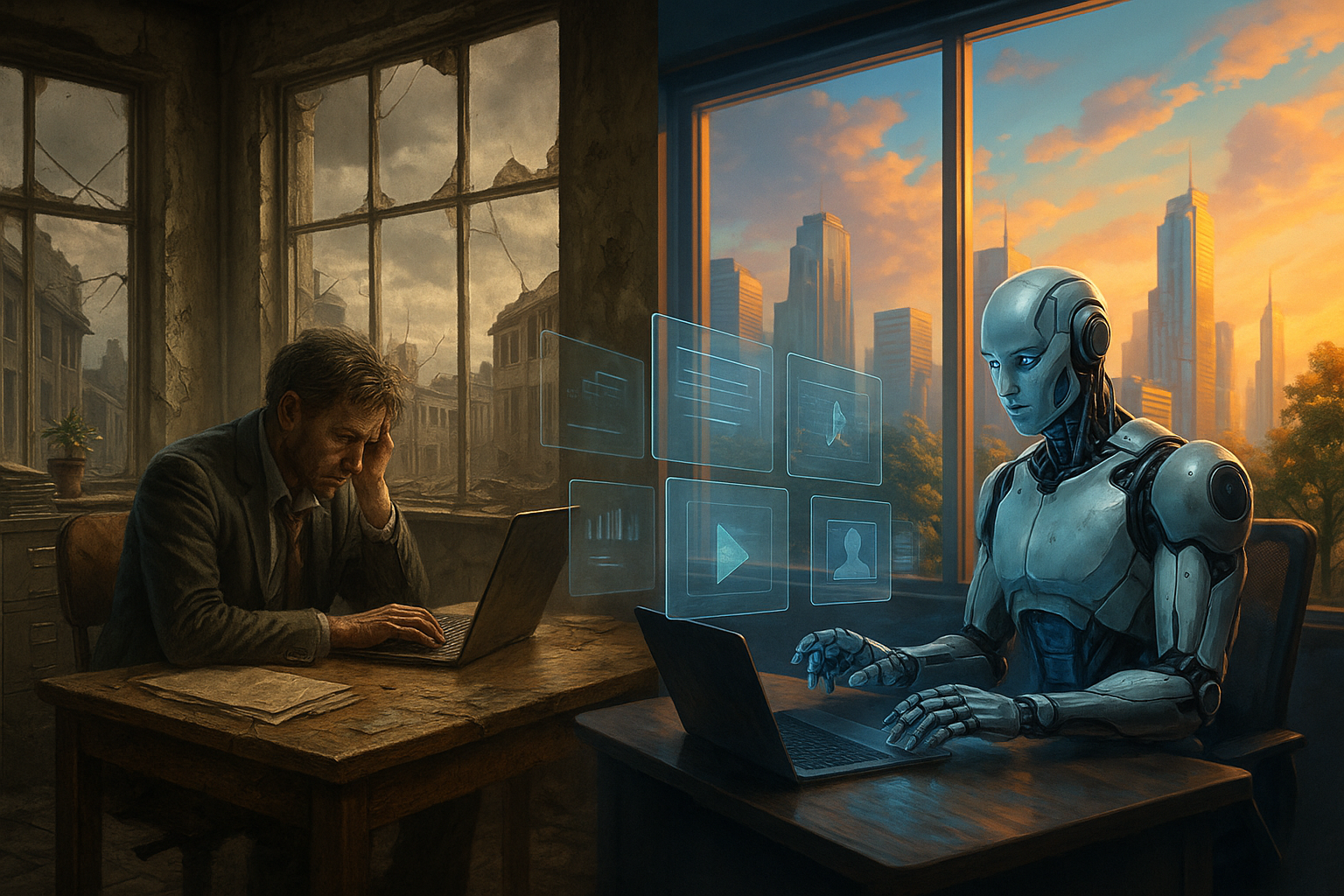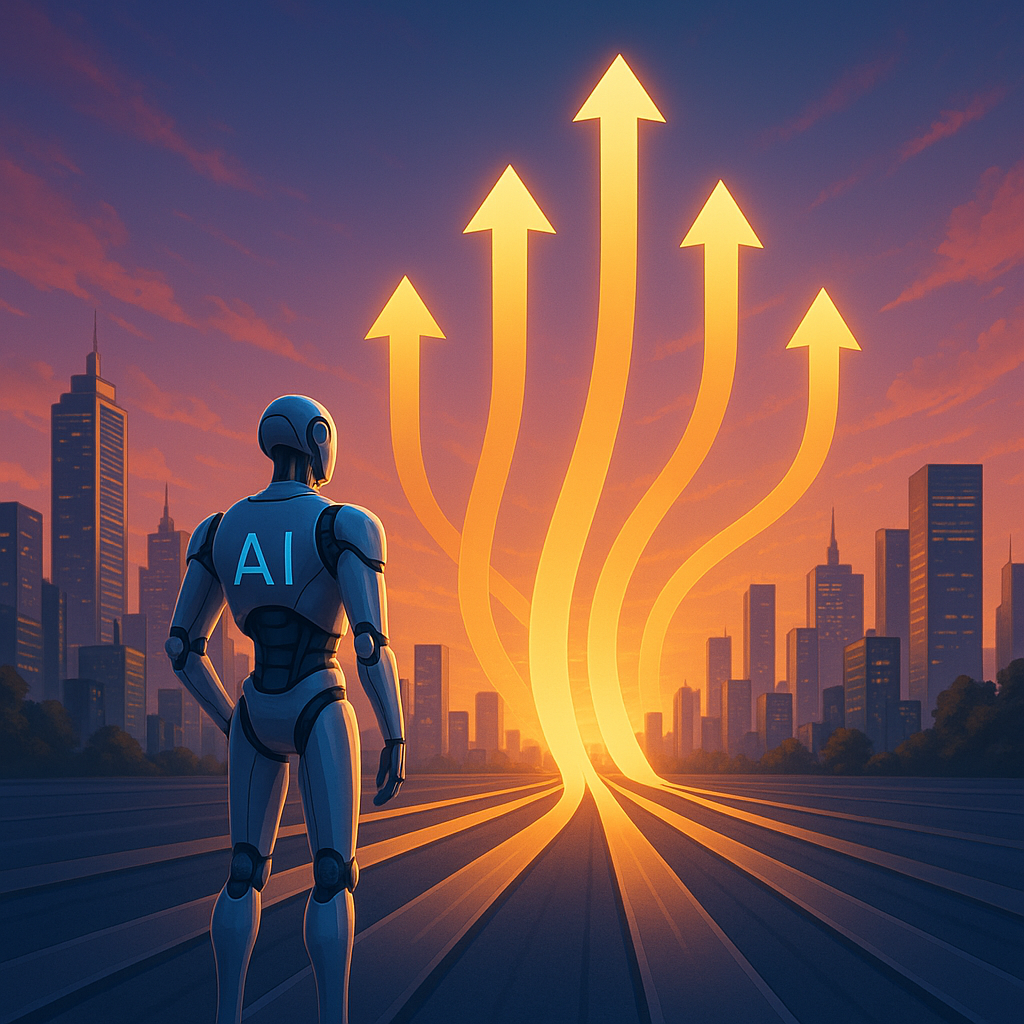
Imagine two parallel universes existing right now. In one, a business operates by the old rules: planners, manual content creation, long meetings, and decisions based on intuition. In the other, a business uses artificial intelligence as a "second brain" that automates routines, predicts trends, and works 24/7. This isn't science fiction. It's a digital divide happening before our eyes, and it determines who will become a leader and who will be an outsider.
Today, we'll conduct a direct comparison of these two worlds to show you just how different the approaches and results are for companies that implement AI versus those that continue to work "the old-fashioned way."
The Battle for the Future: Scene by Scene
Let's look at key business processes to see the difference with the naked eye.
Scene 1: Marketing and SMM
-
Business without AI ("Manual Mode"):
-
Content: The SMM manager squeezes out ideas for a content plan every week. Writing posts takes hours. The team burns out from the constant chase for new topics.
-
Visuals: The designer is swamped with tasks: create an image for a post, edit a simple video. The process is slow and expensive.
-
Result: Irregular posting, generic content, slow reaction to trends. Campaign effectiveness is judged "by eye" or through complex manual reports.
-
-
Business with AI ("Autopilot 2.0"):
-
Content: The marketer enters a query: "create a one-month content plan for an Instagram cosmetics store." In a minute, AI suggests dozens of topics, categories, and ready-made texts. Generating unique posts becomes a daily routine.
-
Visuals: An AI video generator creates short clips with a digital avatar talking about promotions. Images for posts are generated from a text description.
-
Result: Content is created 10 times faster. The team focuses on strategy, not execution. AI analyzes content effectiveness and provides recommendations for future publications.
-
Scene 2: Sales and Customer Service
-
Business without AI ("Limited to 9-to-5 Hours"):
-
A customer writes at night and gets a reply only in the morning. By then, they may have gone to a competitor.
-
Managers spend time answering typical questions: "What's the price?", "How do you deliver?".
-
The human factor: a manager might forget to call back, be in a bad mood, or provide incomplete information.
-
-
Business with AI ("24/7/365 Support"):
-
A smart website chatbot and social media bot instantly answer 80% of inquiries, provide consultations, and collect contacts.
-
AI analyzes dialogues and qualifies leads, passing only "hot" customers with a full request history to the manager.
-
Personalization: AI analyzes a customer's behavior on the site and offers them the exact products that might interest them.
-
Scene 3: Strategic Decisions
-
Business without AI ("Intuition and Guesswork"):
-
Decisions to launch a new product or ad campaign are based on past experience and limited data.
-
Competitor analysis is a manual monitoring of their sites and social media, which is always late.
-
Sales forecasting involves complex Excel spreadsheets with a high probability of error.
-
-
Business with AI ("Data-Driven Decisions"):
-
AI analyzes market trends, customer feedback, and competitor actions in real time, providing strategic recommendations.
-
Predictive models forecast demand with high accuracy, allowing for optimized inventory.
-
AI-powered SEO tools suggest what content to create to outperform competitors in search results.
-
The Cost of Inaction: Why Ignoring AI Is the New Form of Bankruptcy
Today, not implementing AI is like trying to win at chess against a computer with only an abacus. Companies that ignore automation are consciously choosing to:
-
Be Slower: While they write one post, a competitor with AI generates ten.
-
Be More Expensive: They spend human resources on routines that a machine does for free or much cheaper.
-
Be Less Effective: They lose customers due to slow communication and make decisions blindly.
How to Join the Bright Side: Your Action Plan
Transitioning to a business with AI isn't as hard as it seems. The main thing is to start.
-
Find the "Pain Point": Identify which process takes up most of your time and resources. Is it content creation? Handling inquiries?
-
Start Small: Begin with something simple, like SMM automation and text generation.
-
Choose the Right Tool: To avoid creating a "zoo" of dozens of services, choose comprehensive platforms. For example, Clipsy.io allows you to generate content, create videos with avatars, set up chatbots, and automate marketing all in one place. It's your single command center for working with AI.
Conclusion
The question is no longer "if" to implement AI, but "how far behind" you'll fall if you don't do it today. The worlds of business "before" and "after" AI are diverging every day. And it's up to you to decide which one you'll be in tomorrow.
Don't wait for the future to happen without you. Start building it for your business today.
Related Articles
 Подробнее
Подробнее
 Подробнее
Подробнее
 Подробнее
Подробнее